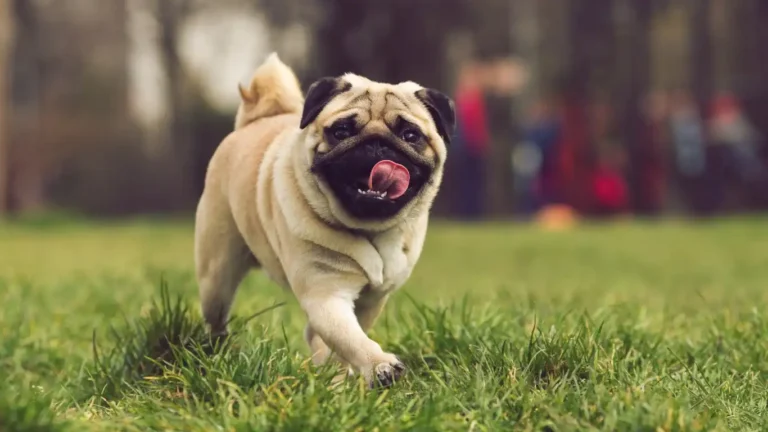How to Remove Dog Tear Stains Naturally: 5 Simple Steps to a Stain-Free Pup
As a veterinary technician specializing in nutrition, I’ve seen my fair share of tear stains in dogs, and I know how frustrating it can be for pet owners. If you’re reading this, chances are your furry friend is struggling with those unsightly reddish-brown stains under their eyes, and you’re wondering how to remove dog tear stains naturally. You’re not alone—this is a common issue, especially for certain breeds like Shih Tzus, Poodles, and Bulldogs. But don’t worry! In this guide, I’ll walk you through effective, natural ways to help reduce and even eliminate those tear stains for good. With a few simple adjustments to your dog’s routine, diet, and grooming practices, you’ll notice a big improvement. So, let’s dive into it!
Understanding Tear Stains: Why Do They Happen?

Tear stains are more than just a cosmetic concern—they can actually tell us a lot about your dog’s health. But first, let’s break down what they are and why they happen. Tear stains are typically caused by excessive tearing, also known as epiphora, which results in tears overflowing and staining the fur around the eyes. This isn’t just a “bad hair day” moment; it can be a sign of something going on under the surface.
In many cases, tear stains develop due to a variety of factors such as:
- Blocked tear ducts: When tear ducts get clogged, tears can’t drain properly and overflow onto the fur.
- Allergies: Environmental allergens, food sensitivities, or even pollen can cause your dog’s eyes to water more than usual.
- Breed predisposition: Certain dog breeds, especially brachycephalic ones (like Bulldogs and Pugs), are more prone to tearing due to their facial structure.
- Infections: Conjunctivitis or other eye infections can lead to excessive tear production.
While the appearance of tear stains can seem like just a cosmetic issue, they could also indicate that something else is going on. So before jumping into natural remedies, it’s important to rule out any medical conditions. If your dog’s tear stains seem severe or are accompanied by other symptoms (red eyes, squinting, or discharge), it’s best to consult your vet for a thorough exam.
How Diet Plays a Role in Tear Stains

As I mentioned earlier, I specialize in nutrition, and over the years, I’ve seen firsthand how a dog’s diet can play a huge role in tear stains. I know it can be tempting to reach for over-the-counter solutions, but sometimes the root cause of tear stains is internal. Specifically, the food your dog eats can contribute to excessive tearing. In my experience, it’s often a matter of what they’re eating and how their body responds to certain ingredients.
Here are some dietary factors to consider when trying to reduce tear stains:
- Food allergies: Just like humans, dogs can be allergic to certain foods. Common allergens like grains, soy, and dairy might contribute to excessive tearing. If you suspect food sensitivities, you might want to try an elimination diet to see if that helps.
- Low-quality ingredients: Some low-quality dog foods contain artificial dyes, preservatives, and by-products that can irritate your dog’s eyes and lead to excessive tearing. Opting for high-quality, natural dog food can make a big difference.
- Excessive carbohydrates: Some pet foods are packed with carbs, which can lead to inflammation and, in turn, increased tearing. Look for foods with high protein and low carbs to help balance your dog’s system.
- Hydration: Don’t forget that water is a crucial part of your dog’s diet. Ensuring your pup stays hydrated can help keep their tear production in check.
If you’re unsure where to start, consider transitioning your dog to a well-balanced, grain-free diet with high-quality protein sources. You might also want to add supplements such as omega-3 fatty acids, which can help reduce inflammation and promote healthy skin and coat. I’ve had clients who noticed a significant decrease in tear stains after switching to a more natural diet.
Natural Supplements That Can Help
If you’re not sure where to start with supplements, don’t worry—I’ve got you covered! There are several natural options that might help improve your dog’s tear stains by addressing underlying health issues. As a vet tech, I’ve personally recommended these supplements to pet owners, and they’ve seen positive results:
- Probiotics: Good gut health is essential for overall wellness, including skin and eye health. Adding probiotics to your dog’s diet can help improve digestion and reduce inflammation, which might, in turn, reduce tear stains.
- Apple cider vinegar: Apple cider vinegar is a great natural remedy that can help balance the pH of your dog’s tears. Some owners add a small amount of diluted apple cider vinegar to their dog’s water (always consult your vet first before adding anything to their water). It can help fight bacterial buildup around the eyes and reduce staining.
- Eyebright herb: Eyebright is an herb known for its ability to soothe the eyes and reduce inflammation. It’s been used in traditional herbal medicine for centuries to help with eye irritations, and some dog owners have found it effective for reducing tear stains.
- Omega-3 fatty acids: These healthy fats found in fish oil can help reduce inflammation throughout the body, including around the eyes. Omega-3s can also support overall skin health, which is important for keeping tear stains at bay.
Before adding any new supplements to your dog’s routine, it’s always a good idea to check with your veterinarian, especially if your dog is on any medications or has specific health concerns.
Grooming Tips to Reduce Tear Stains

One of the most important aspects of managing tear stains is proper grooming. While you can’t prevent all the causes of excessive tearing, you can certainly keep the area clean and reduce the staining. As a veterinary technician, I’ve seen firsthand how regular grooming can make a huge difference, not just for aesthetics but for your dog’s comfort as well.
Let me walk you through a few grooming practices I swear by:
- Regular Eye Cleaning: Keeping the fur around your dog’s eyes clean is crucial. I recommend using a soft, damp cloth or cotton pad to gently wipe away any tears. For a more thorough cleaning, you can use pet-safe eye wipes that are specifically designed to remove tear stains. I’ve found that doing this twice a day works wonders for keeping the area fresh and clean.
- Trim the Hair Around the Eyes: The longer the hair around your dog’s eyes, the more likely it is to trap moisture and bacteria, which can exacerbate tear stains. Carefully trim the hair around your dog’s eyes using rounded-tip scissors to avoid any accidental nicks. I recommend doing this every couple of weeks or as needed, depending on how fast your dog’s fur grows.
- Use Tear Stain Remover Products: There are some excellent natural tear stain removers available that can help break down the stains without using harsh chemicals. Look for ones that use ingredients like chamomile or aloe vera, which are gentle on your dog’s skin. I’ve had clients who’ve had great results using these products along with a regular grooming routine.
Home Remedies for Tear Stains

If you’re looking for more natural approaches to remove dog tear stains, there are several home remedies that have been tried and tested by pet owners (including myself!). While no single solution works for every dog, I’ve found that these methods can help reduce the appearance of tear stains and keep your dog’s eyes feeling fresh.
1. Coconut Oil
Coconut oil is one of my absolute favorites when it comes to natural remedies for tear stains. It has natural antibacterial properties and can be used to gently clean the area around your dog’s eyes. I personally use coconut oil on my own dog’s tear stains, and I’ve seen a noticeable difference in just a couple of weeks. The best part? It’s safe, soothing, and smells great!
To use coconut oil for tear stains:
- Gently apply a small amount of coconut oil to a cotton ball or your finger.
- Massage it into the stained area around your dog’s eyes.
- Leave it on for a few minutes before wiping it off with a damp cloth.
Repeat this process once or twice a day until you see improvement. Coconut oil can also help prevent new stains from forming, so it’s a great long-term solution.
2. Aloe Vera
Another natural remedy I recommend is aloe vera, which is known for its soothing properties. Not only is aloe vera great for your dog’s skin, but it can also help reduce inflammation and prevent irritation around the eyes. Just be sure to use pure aloe vera gel, and avoid any products with added chemicals or fragrances, as these can irritate your dog’s skin.
To use aloe vera on tear stains:
- Apply a small amount of aloe vera gel to a cotton pad.
- Gently wipe the stained area around your dog’s eyes.
- Leave it on for a few minutes, and then wipe off the excess with a clean cloth.
Using aloe vera twice a day can help with both the stains and the overall health of the skin around your dog’s eyes.
3. Chamomile Tea
Chamomile tea is another great natural remedy for tear stains, particularly because of its calming and anti-inflammatory properties. This is a simple, cost-effective option that I’ve recommended to many dog owners over the years. It can help reduce the irritation that causes excessive tearing, and it’s easy to make at home!
To use chamomile tea:
- Brew a chamomile tea bag and let it cool completely.
- Soak a cotton ball in the tea and gently wipe away any crusty build-up or stains.
- Repeat the process 1-2 times a day for best results.
Chamomile is gentle enough to use every day, and you might notice that your dog’s eyes look less red and irritated over time. Plus, it’s a calming remedy for both your dog and yourself!
Ensuring Your Dog’s Eye Health
Now, while all of these natural remedies and grooming tips are effective for managing tear stains, it’s important to remember that eye health should always come first. If your dog’s tear stains persist or worsen despite your efforts, it may be time to look into underlying health issues.
Some potential causes of persistent tear stains include:
- Chronic eye infections: Bacterial or fungal infections in your dog’s eyes can cause excessive tearing and discomfort.
- Conjunctivitis: This is an inflammation of the eye’s mucous membrane, which can cause your dog’s eyes to water uncontrollably.
- Blocked tear ducts: If your dog’s tear ducts are blocked, it can prevent tears from draining properly, leading to constant staining.
- Entropion or ectropion: These are eyelid conditions that can cause the eyelids to fold in or out, affecting tear drainage and leading to staining.
If you notice other symptoms like squinting, redness, or discharge, it’s crucial to get your dog checked by a veterinarian. As a veterinary technician, I’ve had many clients come in with persistent tear stains, only to find that the issue was related to a more serious eye condition. A quick vet visit can save your dog from unnecessary discomfort.
Alternative Treatments: When to Consider Veterinary Care

While natural remedies and grooming routines are effective for many dogs, there are some situations where veterinary intervention is necessary. As I mentioned earlier, chronic or severe tear stains could indicate an underlying health issue that needs to be addressed by a professional. If you’ve tried the natural methods and haven’t seen significant improvement, it might be time to consult with your vet to rule out any serious conditions.
Some common veterinary treatments for tear stains may include:
- Prescription medications: If your dog’s tear stains are caused by an infection or allergy, your vet may prescribe medication to treat the underlying issue. Antibiotics, antifungals, or antihistamines can help address these problems and reduce excessive tearing.
- Eye drops or ointments: For dogs suffering from conjunctivitis or other eye issues, your vet may recommend specialized eye drops or ointments to soothe irritation and promote healing.
- Surgical procedures: In rare cases, if your dog has a blocked tear duct or eyelid issues like entropion or ectropion (which cause the eyelids to roll inward or outward), surgery may be necessary to correct the problem and prevent tear stains from recurring.
It’s always best to reach out to your vet if you’re unsure about the cause of your dog’s tear stains or if they are showing signs of discomfort, such as excessive squinting, rubbing their eyes, or having pus-like discharge. As a veterinary technician, I’ve had cases where an eye exam revealed deeper issues, and early intervention can make a huge difference for your dog’s health and comfort.
Maintaining Tear Stain-Free Eyes: Long-Term Tips
Once you’ve managed to reduce or eliminate the tear stains, it’s important to continue with a maintenance routine to prevent them from returning. After all, the goal is to keep your dog comfortable and stain-free without constantly battling tear stains. Here are a few long-term tips I’ve found helpful over the years:
- Keep the area dry: Excess moisture around your dog’s eyes is a breeding ground for bacteria, which contributes to tear staining. Regularly wiping the area and keeping the fur dry will help maintain clean eyes and fur.
- Use a raised food and water bowl: Sometimes, tear stains are made worse by your dog’s food and water bowls. Using a raised bowl can reduce the amount of food or water that gets trapped in the fur, particularly for dogs with shorter snouts.
- Change your dog’s bedding regularly: Bacteria and dirt can accumulate in your dog’s bedding, contributing to eye irritation and staining. Keeping your dog’s sleeping area clean will help minimize exposure to any potential irritants.
- Monitor their diet and hydration: As I mentioned earlier, a healthy, well-balanced diet plays a huge role in your dog’s overall health, including their eyes. Regularly monitor your dog’s diet, and make sure they’re getting enough fresh water throughout the day.
When Tear Stains Are More Than Just Cosmetic: The Importance of Early Detection
While tear stains are often thought of as a cosmetic issue, they can sometimes be a sign of an underlying health problem. This is why it’s important to stay on top of your dog’s health and consult your vet if you notice any changes in their eye health or behavior. Early detection and intervention can help prevent the issue from becoming worse and causing your dog more discomfort.
Some of the more serious conditions associated with tear stains include:
- Blocked tear ducts: If the tear ducts are blocked, the tears can’t drain properly and cause overflow, leading to staining. In some cases, this can require surgical intervention to clear the blockage.
- Conjunctivitis (Pink Eye): This is an infection or inflammation of the conjunctiva, which causes excessive tearing. Conjunctivitis can be viral, bacterial, or allergic in nature, and it often requires professional treatment.
- Glaucoma: Glaucoma is a serious condition where increased pressure within the eye can cause pain, vision problems, and excessive tearing. This condition requires prompt veterinary care to prevent permanent damage to the eye.
As a veterinary technician, I’ve seen how addressing these conditions early on can not only improve the quality of life for the dog but also save pet owners a lot of stress and frustration in the long run. So, always trust your instincts and seek professional help if you feel something isn’t quite right with your dog’s eyes.
References
If you’d like to learn more about dog health, including common eye conditions and treatments, here are some reputable resources to check out:
Disclaimer
All the advice and suggestions in this article are based on my experience as a veterinary technician and my personal observations. However, each dog is different, and what works for one may not work for another. Always consult your veterinarian before trying new treatments, especially if your dog has any pre-existing medical conditions or is taking medication. The information provided here is meant for informational purposes only and should not replace professional veterinary advice.






